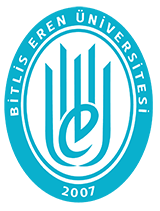| dc.description.abstract | This study aimed to prepare chromium-based catalysts on titanium-modified MCM-41 for oxidative dehydrogenation reactions. MCM-41 was synthesized hydrothermally. In order to increase the hydrothermal stability of support, titanium was added to the MCM41. The titanium source (K2TiF6) was dissolved in two different solvents (hot water and sulfuric acid). The hydrothermal stability test was performed with the samples. The samples were characterized by XRD, N2 adsorption/desorption, FT-IR, and SEM/EDS analysis. When titanium was added to the MCM-41 structure, it was determined that the pore walls thickened, and the main peak characterizing the hexagonal structure was preserved. With the modification, the average pore diameter of MCM-41 decreased from 28Å to 22Å, and the surface area decreased from 1250 m2/g to 500 m2/g. The hydrothermal stability test indicated that the loading of titanium improved the stability of MCM-41. FT-IR results showed that titanium has formed strong bonds with oxygen atoms, creating Si-O-Ti, Ti-OH, and Ti-O bonds. These bonds enhanced to stabilize the MCM-41 structure, making it more resistant to structural changes. Smaller crystal size (178Å) and higher surface area (554 m2/g) were determined in the support prepared by dissolving the titanium source in hot water. Therefore, this support was used in catalyst synthesis. Chromium-based catalysts on titanium-modified MCM-41 were prepared by wet impregnation method at different chromium loading (3% and 10%, by mass). The presence of the anatase phase of TiO2 and inactive α-Cr2O3 in the high chromium-loaded sample was determined. Therefore, catalytic tests were carried out with a catalyst containing 3% chromium by mass, prepared using a Timodified support, as well as a catalyst prepared using an unmodified support. The highest isobutane conversion (94%) and isobutene selectivity (81%) values were obtained for catalyst supported on Timodified MCM-41. High activity predicted for catalyst supported on modified MCM-41 was explained by improving hydrophilic properties | tr_TR |














